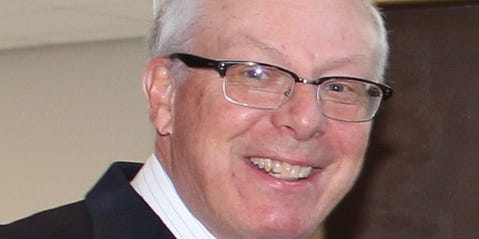CONCORD — Critics of medical aid in dying are voicing their opposition to the End of Life Option Act in New Hampshire, expressing concerns that it may lead to the normalization of suicide and jeopardize individuals with disabilities.
Scheduled for a hearing in the House on Wednesday, House Bill 1283 aims to permit terminally ill individuals with a life expectancy of fewer than six months to access medical aid in dying. Advocates argue that this legislation could offer relief to those facing agonizing deaths.
During a press conference on Monday coordinated by the New Hampshire Coalition for Suicide Prevention, opponents of the bill raised apprehensions.
Some View the End of Life Act as a ‘Slippery Slope’
The current End of Life Options Act outlines specific requirements for eligibility for medical aid in dying: individuals must be 18 years or older, diagnosed with a terminal medical condition, have a prognosis of less than six months, possess the mental capacity to make an informed decision, and be physically capable of self-administering the prescribed medication.
However, Steven Wade, the executive director of the New Hampshire Brain Injury Association, expressed concerns that the bill could pave the way for the erosion of safeguards in the future. He cited instances in other states where waiting periods were eliminated, the definition of terminal illness was broadened, and state residency requirements were lifted. For example, Vermont currently permits medical aid in dying.
Wade remarked that the bill could undermine the progress made in state suicide prevention efforts, potentially medicalizing suicide. He cautioned that it might expand to encompass other vulnerable populations.
Lisa Beaudoin, the founder of Strategies for Disability Equity, and Jules Good, a disability justice organizer based in New Hampshire, warned that the legislation could endanger individuals with disabilities. Beaudoin referenced California, where the End of Life Options Act has been in effect since 2016. Last year, a group of individuals with disabilities [ppp1], criticizing the system for offering death instead of adequate care.
Good highlighted the biases against people with disabilities, noting that they often receive inadequate care compared to those without disabilities. Without proper care, a non-terminal condition could swiftly deteriorate into a terminal one.
Despite the safeguards incorporated into the law, Good doubted their efficacy in preventing coercion, particularly among the most vulnerable populations in New Hampshire.
Exploring Alternatives to Medical Aid in Dying
Opponents of the bill advocated for palliative care, which focuses on providing relief, as an alternative to medical aid in dying.
Dr. Jonathan Eddinger, the president of [ppp2], emphasized the importance of enhancing physician training and funding for palliative care.
Eddinger stressed that both sides aim to alleviate suffering and pain at the end of life. By improving palliative care, the need for medical aid in dying, a method rooted in ending life rather than providing care, could be eliminated.
Patients already have options to participate actively in their end-of-life decisions, such as issuing a do-not-resuscitate order, discontinuing food and fluids, and opting out of certain therapies.
Should medical aid in dying be legalized, Eddinger feared that it could become the most cost-effective option in end-of-life care, potentially leading insurance companies to promote this choice.
He cautioned that this legislation might facilitate abuse and discourage families and patients from selecting palliative care over the medication-based option.
Eddinger also expressed concerns that the law could stifle discussions on enhancing the quality and accessibility of end-of-life care.
While acknowledging the suffering of individuals in pain, Good underscored the importance of considering the broader implications.
“We must strive for long-term improvements, not just immediate relief for those in pain,” Good emphasized. “Legislation of this nature does not serve our best interests in the long run; it places us at risk.”
